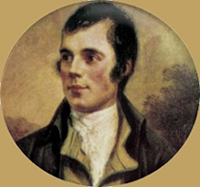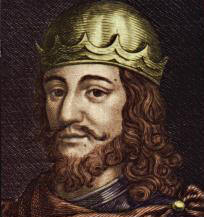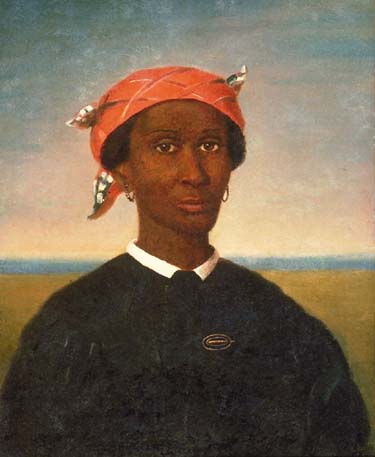The Douglas Archives
Extreme genealogy
By Megan Lane
BBC News Magazine
A family tree researched by conventional methods can only go back so far
before patchy records stymie progress. Now amateur genealogists are
turning to DNA testing to trace their ancestry. But how much can this tell
us about where we come from?
My family tree is rooted in Scotland, as far back as my mother has managed
to trace the branches. But having reached the early 1800s, the trail has
gone cold. There are blanks, dead-ends and inconsistencies thanks to lost,
absent or incomplete written records.
It's a frustration shared with amateur genealogists the world over. But a
record that can never be lost or incomplete is now available to those who
wonder "where do I come from?" - their DNA. Thanks to recent
breakthroughs in genetic testing, scientists claim they can trace our
origins back tens of thousands of years - for a price.
US firms such as Family Tree DNA and DNAPrint Genomics will tell you if
you are related to Native Americans and other racial groups. And in the
UK, several operators offer a range of DNA services for ancestry research.
For about £180, the scientists at Oxford Ancestors will trace ancient
maternal ancestry by testing mitochondrial DNA (mtDNA), which is passed
down from mother to child and changes little over time. It is this test
which I have taken.
The firm is the brainchild of the Oxford University geneticist Bryan
Sykes, who five years ago published research showing that everyone of
European extraction could trace their ancestry back to one of seven women
who lived 40,000 years ago. Such was the demand from the public to know
which of the "seven daughters of Eve" they were descended from,
Professor Sykes spotted a business opportunity.
His past research has used DNA to chart human evolution or to solve
genetic riddles. It was he who proved the Polynesians are of Asian, not
South American, descent. More recently, he researched the strong genetic
connections among people with the same surname.
Back to my roots
What can such a test tell me about my ancestry? As a white New Zealander,
I'm highly likely to be descended from one of the seven daughters of Eve.
But if, say, a maternal ancestor had had a hitherto secret liaison with a
Maori, this test could result in a completely different clan being
identified.
The lab processes my DNA
To emphasise that these ancient clan mothers were real people, the team at
Oxford Ancestors has given each woman a name and an imagined biography.
While there were obviously many other women alive at the time, these are
the only ones with direct descendants living today, Professor Sykes says.
"The others in their clan - or their descendants - either had no
children or bore only sons, and so could not pass on their mtDNA."
The DNA test itself is straightforward. A small mouth swab, not dissimilar
to a mascara brush, is rubbed inside the check, and the sample sent for
analysis. From this a section of mtDNA 400 pairs long is extracted, and
the "spelling" of this sequence compared with the many thousands
in the Oxford Ancestors' database.
This shows my maternal ancestor to be Ursula, the oldest of the seven
daughters of Eve, who lived 45,000 years ago in northern Greece. Her
people were cave-dwelling hunter-gatherers, tall and slender by comparison
to the Neanderthals with whom they shared the land for another 20,000
years. The first European cave paintings date from this period.
ANCIENT ANCESTORS
Europeans mostly come from one of seven women
About half are from Helena, who lived in the Pyrenees 20,000 years ago
Among non-Europeans, 29 such clans have been identified
These include 12 among those of African origin
Four among Native Americans
And nine among Japanese
She is an ancient ancestor I share with one in 10 people of European
extraction, particularly among those from Scandinavia and western Britain
(which of course makes for an impossibly large, complex and meaningless
family tree).
The historian Lord Renfrew has said that using DNA analysis gives a skewed
picture as it misses out everyone else who has contributed to our genetic
make-up. "[Looking back] three generations reveals eight
great-grandparents, 10 generations exposes more than 1,000 ancestors. Each
one of these individuals has contributed to your gene pool, but by
studying only the Y chromosome and mitochondrial DNA, you reveal only two
lineages: your father's father 10 times removed, and your mother's mother
10 times removed."
Thus if the imagined liaison was on my father's side - say, between his
great-grandfather and a Maori woman - the DNA tests wouldn't pick that up
as my mtDNA is from my mother.
Close encounters
What is of more interest is that my DNA sequence is an exact match for one
other on the Oxford Ancestors' database - which means we're closely
related, and may be able to add to each others' family trees should we
make contact - and a near match to numerous others, which means a family
connection some time in the past few hundred years.
mtDNA passes from mother to child
"Let's take a look where they live," says Prof Sykes, tapping
into the database. "Hmmm, pretty Celtic. Most are in Scotland, the
Hebrides, the west side of the UK."
But while I know how my near forebears made their way across the world a
century ago, how did their ancestors get to Britain from northern Greece?
What is known about the major migrations and dispersals of the past
provides rich material for imagining past lives. Gradually they moved
westward, first to France and the Iberian peninsula, and eventually
settling in what is now Scotland, Wales and Ireland several thousand years
ago.
Which is pretty much what many millions of people - be they Scottish,
American, Australian and so on - can conclude about their ancestry.
See also: DNA
|
|
| FEATURE
ARTICLES |
 |
| |
|
 Robert Burns
Find out just how close Scotland came to losing the poet to
Jamaica, and the role played by Patrick Douglas Robert Burns
Find out just how close Scotland came to losing the poet to
Jamaica, and the role played by Patrick Douglas
 Seven Daughters of Eve
Almost all people of native
European descent, wherever they may live throughout the world, can
trace their ancestry back to one of seven women, hence, the Seven
Daughters of Eve. Seven Daughters of Eve
Almost all people of native
European descent, wherever they may live throughout the world, can
trace their ancestry back to one of seven women, hence, the Seven
Daughters of Eve.
 Pharoah's daughter -
Queen of Scots. A new book, Scota, Egyptian Queen
of the Scots, by Ralph Ellis, claims to prove that this origin
myth was no made-up story but the actual recording of an Egyptian
exodus that did indeed conclude in Scotland. Pharoah's daughter -
Queen of Scots. A new book, Scota, Egyptian Queen
of the Scots, by Ralph Ellis, claims to prove that this origin
myth was no made-up story but the actual recording of an Egyptian
exodus that did indeed conclude in Scotland.
 Robert
the Bruce. The 700th anniversary of his coronation was
celebrated on 24th March 2006. Robert
the Bruce. The 700th anniversary of his coronation was
celebrated on 24th March 2006.
 Rogues and vagabonds. Not all
Douglases have been goody goodies - read about horse theives, and
others.
Rogues and vagabonds. Not all
Douglases have been goody goodies - read about horse theives, and
others.
 Slaves and
slavers. Slaves and tales of daring-do, as the Douglases
hunt down the slave traders.
Slaves and
slavers. Slaves and tales of daring-do, as the Douglases
hunt down the slave traders.
 The
Douglas Heart. A heart features on many Douglas family coats of
arms, cests etc, including the one at the top of this page.
The
Douglas Heart. A heart features on many Douglas family coats of
arms, cests etc, including the one at the top of this page.
 DNA for
women. The scientists at Oxford
Ancestors can trace ancient maternal ancestry by testing
mitochondrial DNA (mtDNA), which is passed down from mother to
child and changes little over time. (There may be other suppliers)
DNA for
women. The scientists at Oxford
Ancestors can trace ancient maternal ancestry by testing
mitochondrial DNA (mtDNA), which is passed down from mother to
child and changes little over time. (There may be other suppliers)
 Lineage testing
by DNA. A research project seeks volunteers to help
prove Douglas connections
Lineage testing
by DNA. A research project seeks volunteers to help
prove Douglas connections
 Research legends and myths.
Many families have cherished myths and stories about
their immigration to America or other pivotal events and people. We
show you how to determine which family legends are true or false.
Research legends and myths.
Many families have cherished myths and stories about
their immigration to America or other pivotal events and people. We
show you how to determine which family legends are true or false.
|
| |
| PLEASE
CONTACT US |
 |
| |
|
 If
you have any questions or comments about the information on this
site, please contact
us . We look forward to hearing from you. If
you have any questions or comments about the information on this
site, please contact
us . We look forward to hearing from you.
If you wish to stimulate debate, challenge the
content or respond to requests for help, then
our
Forum, may be the place to do it.
|
|


